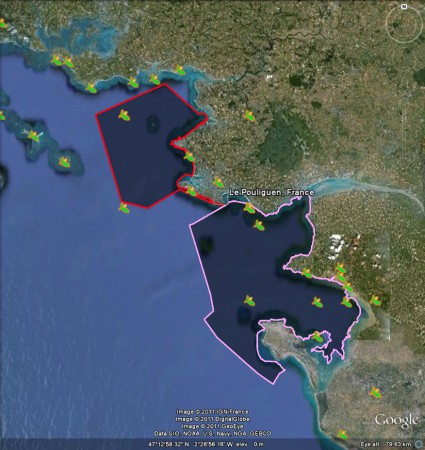Can’t resist a little follow-up to Jeremy’s biographical sketch of PI 198758, which as you’ll remember is a wild beet which hails from Le Pouliguen in France and has some coveted nematode resistance or other. If you look for the taxon in question (B. vulgaris subsp. maritima, and variations thereof) in GBIF, you get quite a few hits around the area of Le Pouliguen, which is in the Loire. And if you check that general region on Natura 2000 you realize that a lot of that coast is protected, whether under the Habitats Directive or the Birds Directive or whatever.
The question, of course, is whether the managers of such protected areas as Mor Braz (that’s the northern polygon on the map) and the Estuaire de la Loire Nord (the southern polygon) are aware of this or any other crop wild relative that may chance to occur in their charges. I suspect that even if you told them, alas, they would not much care. And yes, I know that some of those records seem to fall in the sea. Take it up with the Service du Patrimoine naturel, Muséum national d’Histoire naturelle, who provided the original data to GBIF.

Migratory birds could complicate the true origin of the genotypes that were collected in Le Pouliguen region. Are any of them known to eat Beta seeds during their travels?
Oh come on Dirk, be reasonable. If we’re going to consider how the plant that produced the seeds got there in the first place, we’ll be here forever.